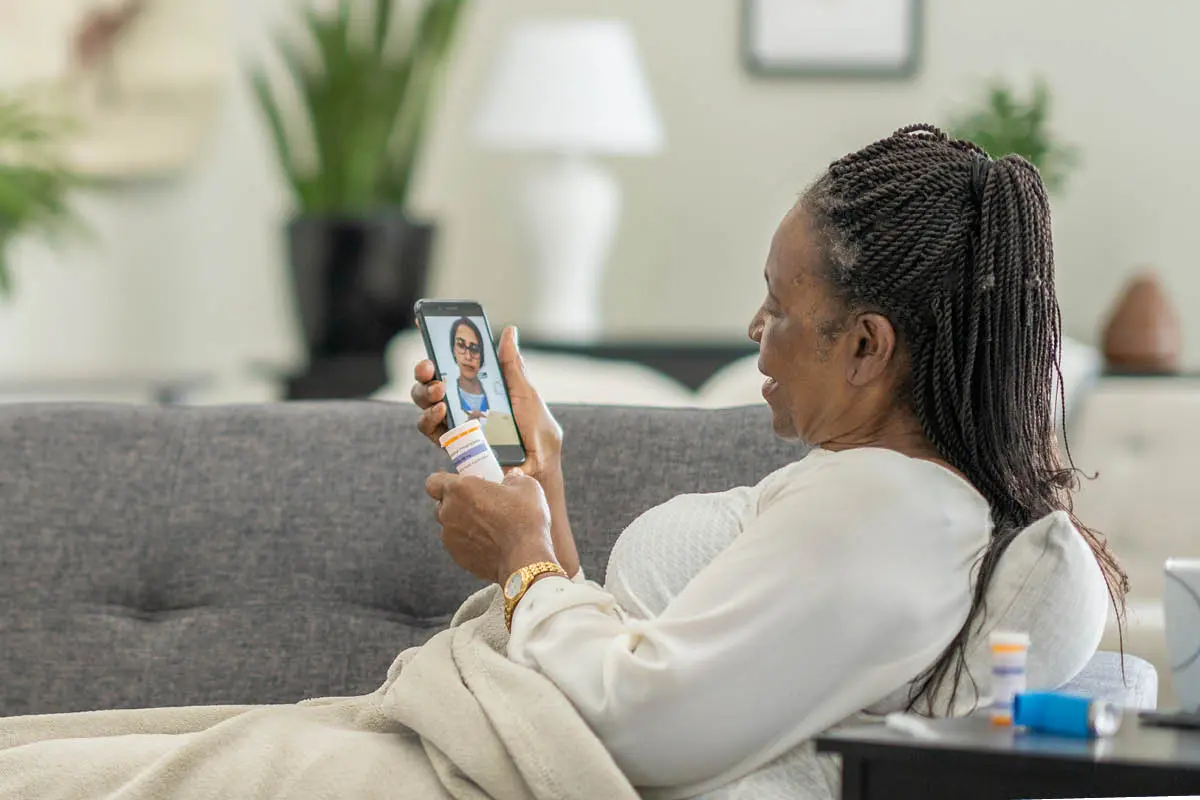Virtual Visits

Getting the care you need from the comfort of wherever you are
When you’re sick, there’s a mile-long list of things you don’t feel like doing. This includes:
- Scheduling an appointment to see your doctor
- Driving to the doctor’s office
- Waiting to see a doctor in a room full of sick people
- Driving to a pharmacy to drop off a prescription
- Anything else that involves leaving your bed or couch
- Wouldn’t it be nice to get the care you need without leaving the comfort of home
The benefits of virtual care
Virtual visits have been around for a few years, but they’ve become more popular (and medically necessary) since the COVID-19 pandemic. Virtual visits, also known as telemedicine or telehealth, allow you to have an appointment with a health care provider by phone or video, which eliminates the need for an in-person visit.
More and more health care providers (including Adena) are offering to see patients via computer or smartphone.
The benefits of virtual care include:
- Convenience – It’s easy to fit a virtual visit into your busy schedule.
- Control – With virtual care, you have more control of your health. By staying home, you aren’t being exposed to germs or other potentially infectious diseases.
- Better assessment – Sometimes, health care providers can provide more specialized care by seeing you in your home environment. This could help an allergist determine the cause of your allergy based on your surroundings, or help a physical therapist see how you are moving around in your home.
The financial benefits of virtual visits
A virtual visit saves you time, but it can also save you money. According to a study published in the Journal of the American Medical Association (JAMA), virtual care can save more than an hour of your time and costs less than a trip to urgent care or an emergency room.
What virtual care is good for
You may be surprised to learn just how many common conditions can be treated virtually, as well as the valuable services it can provide. The list includes:
- Allergies
- Anxiety, depression and other mental health concerns
- Back pain
- Bladder or urinary tract infections
- Bronchitis
- Conjunctivitis (pink eye)
- Cold or Cough
- Diabetes-related issues
- Diarrhea
- Earaches
- Fever
- Gastrointestinal issues
- Hypertension
- Migraines or headaches
- Minor cuts and burns
- Post-surgery follow-ups
- Prescription refills
- Rash
- Seasonal flu
- Skin conditions
- Sinus problems
- Sore throat
- Sports-related injuries
- Stomach ache
- Therapy and counseling
- Urinary tract infections (UTI)
What virtual care is not good for
Telehealth and virtual care are handy for many conditions and treatments, but emergency care is most definitely not one of them. If you are experiencing potentially life-threatening signs or symptoms, go to urgent care or the emergency room immediately. Virtual visits were not intended to replace this kind of care. It also can’t address chronic or complicated conditions, a health issue that would need a hands-on exam, lab test or X-ray.
Potentially more serious conditions can include:
- A suspected head injury
- Anaphylaxis (a severe allergic reaction)
- Any possible signs of stroke, including weakness on one side of your body or facial drooping
- Any potential signs and symptoms of heart attack, including chest pain and shortness of breath
- Breathing issues
- Traumatic injuries from a fall or accident
- Unexplained bleeding
Mental health emergencies including thoughts of suicide or self-harm
Other advantages
Technology has made our lives easier. Especially when it comes to health care. Telehealth and virtual care can go beyond everyday treatment needs. The technology can also be used to:
- Record measurements like weight, food intake, blood pressure, heart rate, and blood sugar levels to send to your doctor.
- Check test results, request prescription refills, send your doctor a message or schedule an appointment.
- Share information such as diagnoses, medications and drug allergies with all of the providers you see.
- Coordinate care between your primary care provider and specialists you may visit, including sharing exam notes and test results between medical offices in different locations.
- Getting email or text reminders when you're due for mammograms, colonoscopies, vaccinations and other screenings.
- Monitor older adults at home to make sure they are eating, sleeping, and taking their medications on schedule.
Don’t feel intimidated
After a lifetime of in-office visits, virtual health care may seem too different – especially if you are easily overwhelmed by technology. But virtual care was designed to be simple for anyone to use. If you can text, you can have a virtual visit. Think of it as an additional tool to help you get the best care possible.
Telehealth services may also be covered by your insurance, so check with your health plan to see if it’s covered for you.
How to schedule a virtual visit at Adena
Virtual visits are easy and convenient. If you would like to schedule virtual care at Adena, click reserve to register or call 740-779-CARE (2273) to learn more.